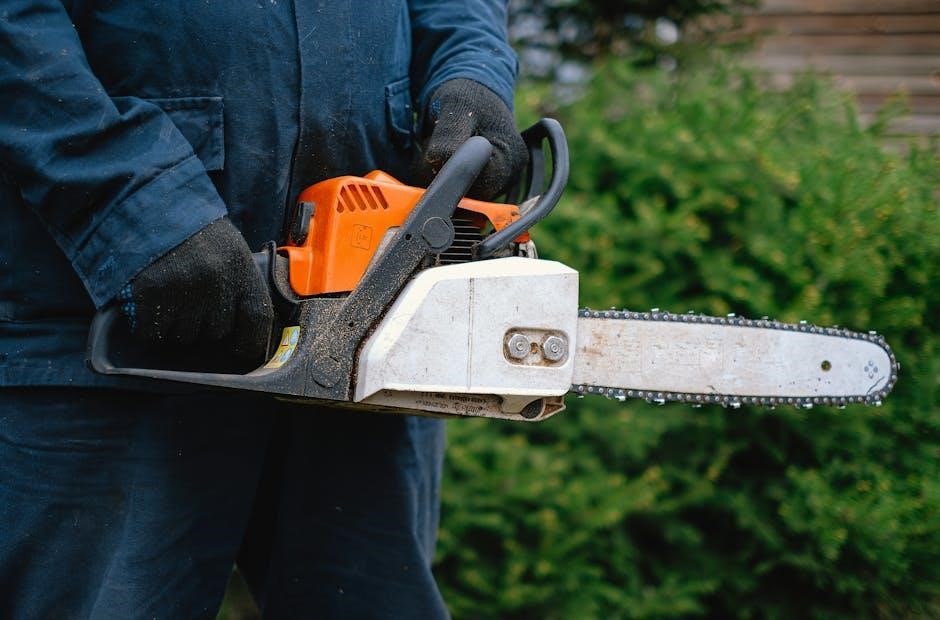time and cost guidelines for typical repairs‚ helping to estimate jobs accurately and efficiently‚ using online resources for guidance and support always.
Definition of Flat Rate Guide
A flat rate guide for small engine repair is a manual or book that provides time guidelines for the performance of typical repairs‚ it is intended to be used by repair shops to estimate the time required to complete a job. The guide is based on industry standards and takes into account the complexity of repairs‚ time required‚ and cost of materials. According to online resources‚ a flat rate guide is not actual time spent on a job‚ but rather a standard time allocated for a specific task. The guide is usually updated regularly to reflect changes in technology‚ repair methods‚ and industry best practices. By using a flat rate guide‚ repair shops can provide accurate estimates to customers‚ manage workflow efficiently‚ and ensure that jobs are completed within a reasonable timeframe. The guide is an essential tool for small engine repair shops‚ helping them to streamline their operations and improve customer satisfaction. With a flat rate guide‚ shops can also identify areas where they can improve their processes and reduce costs‚ ultimately leading to increased productivity and profitability. The definition of a flat rate guide is closely tied to its purpose and application in the small engine repair industry.
Importance of Flat Rate Guide
The importance of a flat rate guide for small engine repair cannot be overstated‚ as it plays a crucial role in ensuring that repair shops operate efficiently and effectively. By providing a standardized framework for estimating repair times‚ the guide helps shops to manage their workflow‚ allocate resources‚ and prioritize tasks. According to online resources‚ a flat rate guide is essential for maintaining customer satisfaction‚ as it enables shops to provide accurate estimates and complete jobs within a reasonable timeframe. The guide also helps shops to identify areas where they can improve their processes‚ reduce costs‚ and increase productivity. Furthermore‚ a flat rate guide helps to establish trust and credibility with customers‚ as it provides a transparent and consistent basis for estimating repair costs. By using a flat rate guide‚ shops can also reduce the risk of underestimating or overestimating repair times‚ which can lead to financial losses or damaged reputations. Overall‚ the importance of a flat rate guide lies in its ability to help small engine repair shops operate efficiently‚ effectively‚ and profitably. The guide is a valuable tool that can help shops to achieve their goals and succeed in a competitive market.
Factors Considered in Creating a Flat Rate Guide
When creating a flat rate guide for small engine repair‚ several factors are considered to ensure that the guide is accurate and effective. These factors include the complexity of repairs‚ the time required to complete each task‚ and the cost of materials and labor. According to online resources‚ the guide also takes into account the level of expertise required for each repair‚ as well as the availability of specialized tools and equipment. Additionally‚ the guide considers the type of engine being repaired‚ as well as any specific manufacturer requirements or recommendations. A list of factors is also considered‚ including
- engine type‚ repair complexity‚ and labor costs
. By considering these factors‚ the flat rate guide can provide a comprehensive and detailed framework for estimating repair times and costs. The guide is also regularly updated to reflect changes in technology‚ manufacturers’ recommendations‚ and industry best practices. This ensures that the guide remains relevant and effective in helping small engine repair shops to operate efficiently and effectively. The factors considered in creating the guide are critical to its success and usefulness.

Flat Rate Pricing for Small Engine Repair
Flat rate pricing for small engine repair uses a
- standardized
system to estimate costs and times‚ helping shops to operate efficiently and effectively always.
Hourly Service Rates
Hourly service rates are an essential aspect of the flat rate guide for small engine repair‚ with shops charging a standard rate per hour of labor‚ typically ranging from 85.00 to 99.00 per hour‚ depending on the location and type of repair.
The hourly service rate is used to calculate the total cost of repairs‚ taking into account the time spent on the job‚ as well as the cost of materials and parts.
A deposit is often required‚ with 45.00 being a common amount‚ to cover the cost of diagnostic and estimate for repair‚ and to ensure that the customer is committed to the repair.
The hourly service rate is usually outlined in the flat rate guide‚ which provides a standardized system for estimating costs and times‚ helping shops to operate efficiently and effectively.
The guide takes into account various factors‚ including the complexity of the repair‚ the time required to complete the job‚ and the cost of materials and parts.
By using the hourly service rate and the flat rate guide‚ shops can provide accurate estimates and ensure that customers are aware of the costs involved in the repair.
This helps to build trust and credibility with customers‚ and ensures that the repair is completed efficiently and effectively.
Overall‚ the hourly service rate is a critical component of the flat rate guide for small engine repair‚ and is used to calculate the total cost of repairs and ensure that customers are aware of the costs involved.
Deposit Requirements
Deposit requirements are a common practice in small engine repair shops‚ with a typical deposit amount of 45.00 being required for all equipment left for repair.
This deposit serves as a guarantee that the customer is committed to the repair and helps to cover the cost of diagnostic and estimate for repair.
The deposit is usually applied towards the total cost of the repair‚ and in some cases‚ it may be refundable if the customer decides not to proceed with the repair.

Shops may have varying deposit requirements‚ but the standard amount of 45.00 is widely accepted in the industry.
The deposit requirement is often outlined in the flat rate guide‚ which provides a clear understanding of the costs and terms involved in the repair.
By requiring a deposit‚ shops can ensure that customers are serious about the repair and help to prevent last-minute cancellations or changes.

This practice also helps to protect the shop’s interests and ensures that they are compensated for their time and effort.
Overall‚ the deposit requirement is an essential aspect of the small engine repair process‚ and customers should be aware of this requirement before leaving their equipment for repair.
The deposit amount and terms should be clearly communicated to the customer to avoid any misunderstandings.

Small Engine Repair Price Guide
Small engine repair price guide provides estimated costs‚ using online resources like ALLDATA Portal for guidance‚ to help customers understand prices for various repairs and services‚ including labor and parts‚ always.
Sample Prices
Sample prices for small engine repair can vary depending on the type of engine and the repair needed‚ with prices ranging from $25 to $200 or more for parts and labor.
A list of sample prices may include $0;25 for a battery‚ $0.50 for a cable or engagement‚ $1.00 for a clutch collar‚ and $2.00 for bearing service or shaft repair.
Online resources like the Small Engines Flat Rate Pricing Guide can provide more detailed estimates and help repair shops and customers understand the costs involved.
It is essential to note that these prices are only samples and may not reflect the actual cost of a repair‚ which can depend on various factors such as labor rates and the complexity of the job.
The use of online resources and repair guides can help to provide more accurate estimates and ensure that customers are informed about the costs involved.
Additionally‚ repair shops may offer flat rate pricing for common services‚ which can help to simplify the pricing process and provide customers with a clearer understanding of the costs.
Overall‚ sample prices can be a useful tool for understanding the costs involved in small engine repair‚ but it is essential to consider the specific needs of each job and the factors that can affect the price.
The sample prices can be used as a starting point for estimating the cost of a repair‚ and online resources can provide more detailed information to help with the estimation process.
By using sample prices and online resources‚ repair shops and customers can work together to ensure that repairs are done efficiently and cost-effectively.
The sample prices are an essential part of the flat rate guide for small engine repair‚ and they can help to make the repair process more transparent and easier to understand.
The prices can be used to estimate the cost of a wide range of repairs‚ from simple maintenance tasks to more complex repairs that require specialized tools and expertise.
In conclusion‚ sample prices are a valuable resource for anyone involved in small engine repair‚ and they can help to make the repair process more efficient and cost-effective.
Motor Rebuild Rate
The motor rebuild rate is an essential component of the flat rate guide for small engine repair‚ as it outlines the costs and time required for rebuilding a motor.
A motor rebuild can be a complex and time-consuming process‚ involving the replacement of seals‚ bearings‚ and other components.
The motor rebuild rate takes into account the complexity of the job and the time required to complete it‚ providing a standardized estimate for the cost of the repair.
According to online resources‚ if a motor seal is being replaced‚ it will be considered a motor rebuild rate‚ as the process of installing seals is similar to a full motor rebuild.
The motor rebuild rate is typically higher than other repair rates‚ due to the complexity and time required for the job.
Online resources‚ such as repair guides and pricing manuals‚ can provide more detailed information on motor rebuild rates and help repair shops and customers understand the costs involved.
The motor rebuild rate is an important consideration for anyone involved in small engine repair‚ as it can help to ensure that repairs are done efficiently and cost-effectively.
By using a standardized motor rebuild rate‚ repair shops can provide accurate estimates and ensure that customers are informed about the costs involved.
The motor rebuild rate is a critical component of the flat rate guide‚ and it plays a key role in ensuring that repairs are done efficiently and effectively.
Overall‚ the motor rebuild rate is an essential tool for anyone involved in small engine repair‚ and it can help to make the repair process more transparent and easier to understand.